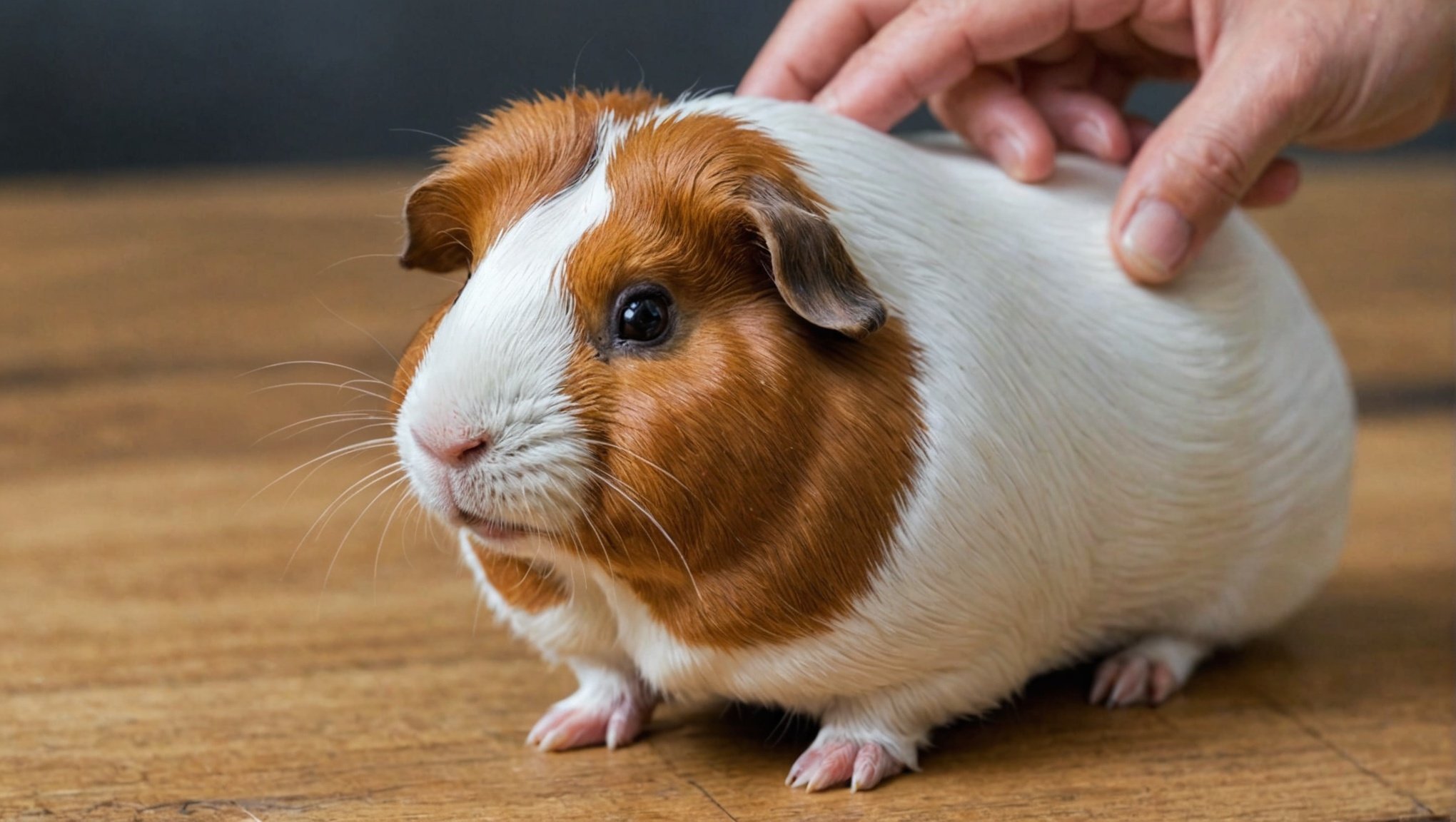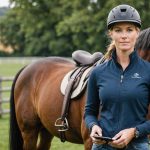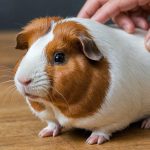Understanding Your Guinea Pig’s Behavior
Recognizing the signs of anxiety in guinea pigs is crucial for ensuring their well-being. Guinea pigs, much like other pets, exhibit specific behaviors when stressed or anxious. Common indicators include excessive hiding, frequent vocalizations, and changes in eating patterns. By observing these behaviors, pet owners can take appropriate steps to alleviate their pet’s discomfort.
Building Trust Through Gentle Handling
Establishing a bond with your guinea pig requires patience and the right handling techniques. Initially, it’s important to approach your pet slowly and let them get accustomed to your presence. Use gentle handling techniques by carefully scooping them up and supporting their body. Consistent, calm interactions can greatly reduce pet anxiety, fostering a secure environment for your guinea pig.
Topic to read : Essential Tips for Creating a Spacious Home for Your Growing Maine Coon Kitten
Understanding the Stress Response in Guinea Pigs
Guinea pigs have a natural stress response that is triggered by sudden changes or perceived threats. Recognizing this response involves paying attention to their body language and vocal cues. To minimize stress, create a stable habitat and establish a predictable routine. Knowing how to manage your guinea pig’s anxiety is key to maintaining their health and happiness. Remember, each guinea pig is unique, and their reactions can vary.
Preparing for Nail Trimming
When it comes to nail trimming preparation for your guinea pigs, ensuring you have all the necessary tools is paramount for a successful session. Essential items include a pair of small animal nail clippers, a styptic powder to stop any accidental bleeding, and a soft towel. These tools not only facilitate the process but also guarantee your guinea pig’s safety and comfort.
In parallel : Essential Tips for Nurturing Your Freshwater Fish in a Thriving Aquarium
Creating a calm environment is crucial before you begin. Choose a quiet room with minimal distractions, and spend a few moments petting and speaking softly to your guinea pig to help soothe them. A composed atmosphere significantly reduces the likelihood of sudden, stress-induced movements during the procedure.
When it comes time to trim, securely holding your guinea pig is vital. You can achieve this by gently wrapping them in a towel, ensuring their body is snug without pressure. This technique, sometimes called a “burrito wrap,” not only keeps the guinea pig still but also prevents accidental injuries from sudden movements. Additionally, using your forefinger and thumb to support their paw can give you better control and visibility while you trim. Adhering to these steps will make the nail trimming process smoother and safer for your furry friend.
Step-by-Step Nail Trimming Process
Trimming your guinea pig’s nails can be a daunting task, but with the right nail trimming technique and attention, it becomes much more manageable. Below is a step-by-step guide that ensures both safety and effectiveness.
Firstly, gather your supplies: nail clippers designed for small animals, a towel to wrap your guinea pig, and some styptic powder in case of any accidental bleeding.
Start by gently wrapping your guinea pig in a towel, leaving one paw exposed. This reduces stress and limits movement, making the process smoother. Hold the guinea pig securely but not too tightly.
Position the clippers between the nail base and the visible pink part, known as the quick. This quickening is where blood vessels and nerves are located, and cutting it may cause pain or bleeding. Hence, it’s crucial to cut below this area.
Here’s how to recognize when to stop trimming: observe the nail and stop before reaching the quick, especially if your guinea pig’s nails are dark and the quick is less visible. Trim incrementally, and if unsure, it’s better to cut less.
Ensuring this careful approach helps maintain your guinea pig’s comfort and health, embodying excellent guinea pig care practices.
Calming Techniques for Nervous Guinea Pigs
Ensuring the emotional welfare of your guinea pig during trimming sessions is crucial. Implementing effective calming methods can transform this potentially stressful experience into a more serene moment for your pet.
One recommended technique is to use treats and positive reinforcement. Offering a favourite snack before and during claw trimming sessions not only distracts but encourages positive associations with the activity. It’s an easy and rewarding way to reduce anxiety.
The role of gentle speaking cannot be overstated. A soft, soothing voice can significantly aid stress reduction. Speak calmly to them, maintaining a reassuring presence throughout the process. It’s a simple yet powerful tool.
Gentle handling also plays a pivotal role. Ensure that you are holding your guinea pig securely but with a tender touch to avoid adding to their nervousness. This respectful approach helps them feel safe and less likely to squirm, which in turn makes the trimming process smoother.
By implementing these tactics, you are not only meeting the physical needs of your pet but also boosting their overall emotional welfare. Techniques like these are fundamental in supporting a happy and healthy guinea pig.
Post-Trimming Care
Once your guinea pig’s nail trimming is complete, it’s crucial to evaluate the results for optimum guinea pig care. Begin by conducting a post-trim assessment to ensure that the nails are cut properly. Check for even edges and ensure the quick—a sensitive area that supplies blood to the nail—remains intact. An ideal trim should leave a small margin above the quick, crucial for maintaining nail health.
Being vigilant about signs of stress is essential. A well-adjusted guinea pig will resume its normal behaviours shortly after trimming. However, if you observe limping or reluctance to walk, it could indicate discomfort or further stress. These issues might stem from inadvertently cutting too close to the quick, leading to pain or bleeding.
Regular nail care is vital for the overall health of your guinea pig. Overgrown nails can cause discomfort, affect posture, and may lead to more severe issues such as sores or infections on their feet. By incorporating consistent nail health checks into your guinea pig care routine, you help ensure they remain comfortable and healthy. In doing so, you contribute significantly to their longevity and quality of life.
Common Mistakes to Avoid
Keeping your guinea pig’s nails trimmed is crucial for their health, but trimming mistakes can be common and, at times, distressing. A frequent error pet owners make is cutting the nails too short, which can lead to bleeding and discomfort for the pet. To avoid this, always ensure you see where the nail’s quick—the sensitive part containing blood vessels—ends. Begin by trimming just the tip and work slowly.
Another mistake involves using improper tools. Specialized nail clippers designed for small pets are essential. Avoid regular human clippers, as they may cause splitting or crushing of the nail. Good guinea pig care tips include keeping your tools clean and sharp for a quick and painless experience.
Managing anxiety, both yours and your guinea pig’s, is also crucial. Some gentle handling and treats during and after the process can gradually improve the experience. With consistent practice and patience, the nail trimming process will become smoother over time. Follow these pet owner advice guidelines to ensure a painless and efficient trimming process, reducing common complications, and creating a pleasant environment for both you and your guinea pig.
Resources and References
Delving into the world of guinea pig care, it’s crucial to access credible resources for accurate information. To expand your knowledge, consider exploring books such as “Guinea Pig Care Secrets” that offer expert advice on keeping these adorable pets healthy and happy. Similarly, websites like Small Pet Select provide comprehensive guides on their proper nutrition and exercise needs.
In addition to reading materials, visual aids play an essential role in understanding care techniques. Watching videos on platforms like YouTube can bring to life the process of creating a comfortable habitat, while infographics summarising key health indicators can be invaluable for quick reference.
It’s also important to recognize when professional advice is needed. Establishing a relationship with a veterinarian ensures you have an expert to consult for health conclusions, dietary recommendations, or concerns about unusual symptoms. Regular check-ups with a vet who specializes in exotic animals can prevent potential health issues before they become problematic.
By leveraging a blend of written guides, visual content, and professional consultation, enthusiasts can ensure they are well-equipped to provide their guinea pigs with the best care possible.













